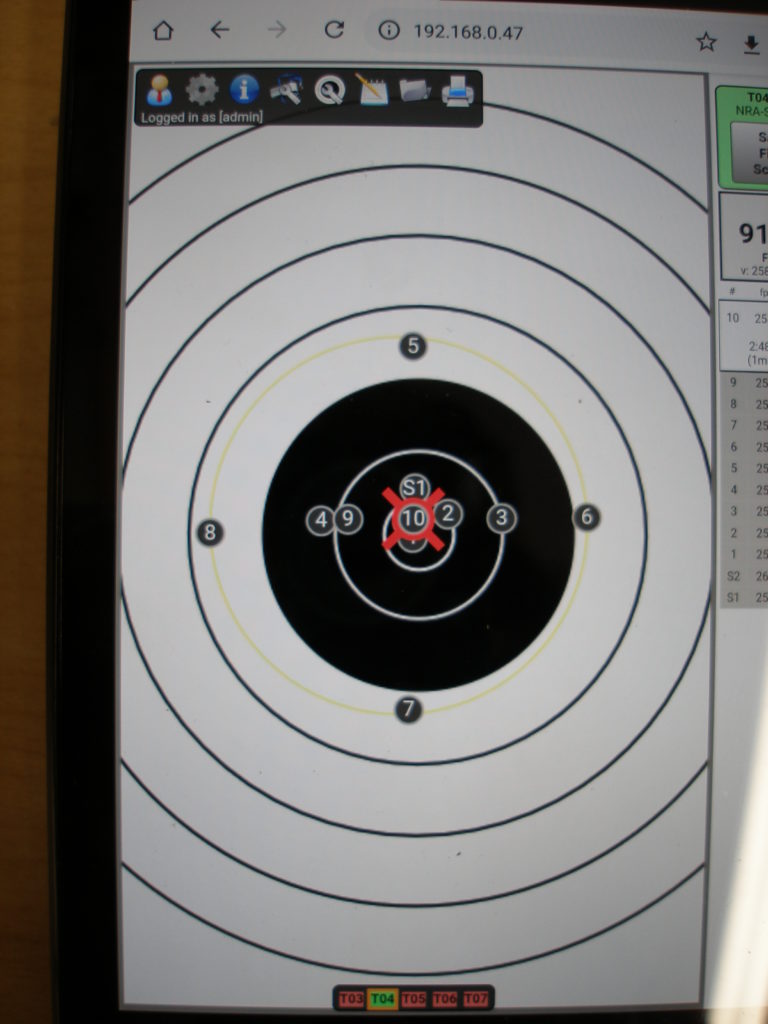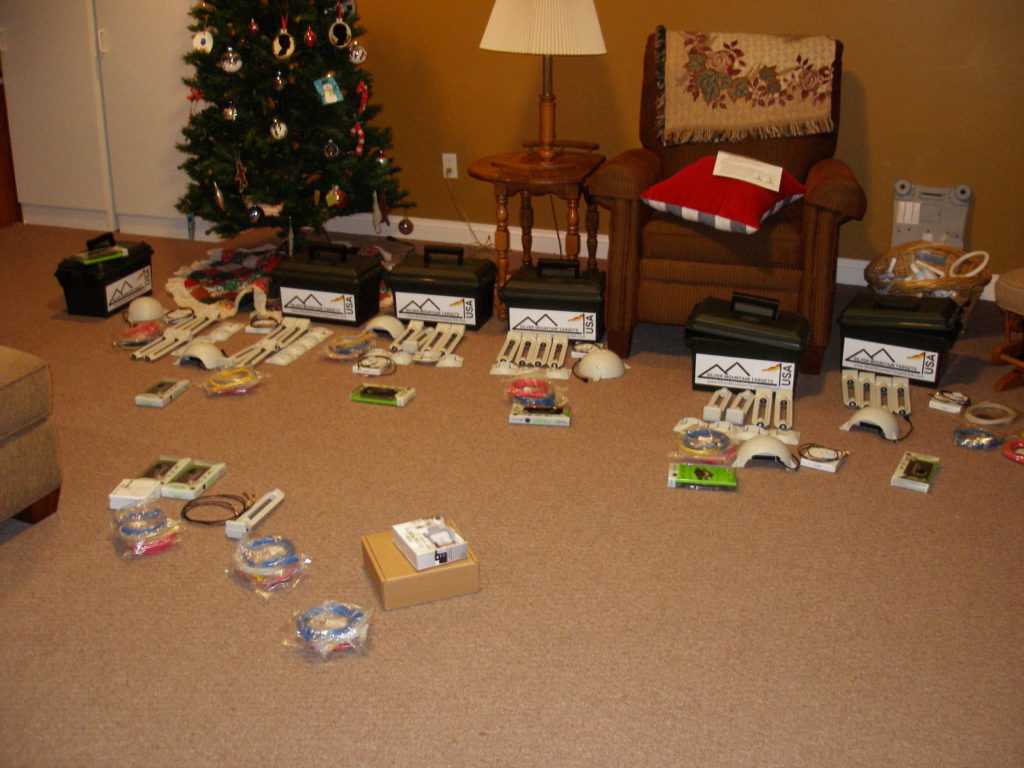Well, for two months in a row we have had a good weather day for a Winter Offhand Match. Saturday December 14 was just about as mild a day as we could ask for in mid-December; about 35-degrees, no wind and an overcast but bright morning. We had eleven shooters show up – and at least two more sent notice that family obligations had to take precedence this month. (That’s one reason we only count three of the five matches for season aggregate!)
By 8:50 we had a full line and no one else in the parking lot, so we started a bit early. By 10:15 we were done and the day’s standings were as follows:
First: Mike King 382-6X
Second: Randy Jahn 372-2X
Third: Mark Walters 369-7X
This was also the first time we have used our Silver Mountain Targets E-target in a match setting. I had a high level of confidence that the target would work well, but a lot less confidence in how I would be able to run the system when someone’s score mattered. I asked Mike King if he would be my guinea pig for the debut – since he is the State High Power Champion, I felt confident that he would do well in this first test.
Mike did very well, as the scores above show. And, I was pleasantly surprised when the practice in my basement in how to handle things worked out nicely on the range. In addition to just watching shot placement on the target, folks looked at how the system shows shot velocities and how it calculates the standard deviation of velocity across the string. Once Mike finished his two strings and saved his target on his phone, the rest of us played with the target for a bit and I practiced deleting cross-fire shots and inserting misses into a shooter’s string.
When we went down-range and compared the group on the tablet to the actual group on the target, if there was any difference in the two it was hard to see and by anyone’s judgment it was much less than one-half of a bullet diameter.
Here is the actual target face at the end of the day. Only one of the shots out in the white is Mike’s, his second sighter was out at 8-o’clock. The others and the .308 holes were added in our after match activities. If all goes well, I want to try to have at least three e-targets for the January match so I can get some experience in managing several shooters at a time.

It was good to see some familiar faces we haven’t seen for a while. Russ Bell came out to shoot today, he’s been buried with work and stuff for the last couple of years. Marie and Dennie Shook came out to visit and kibitz – it was good to see them as well.
Our next match will be January 11 at 9:00 AM. Come out and shoot – or just come out and visit for a while.















